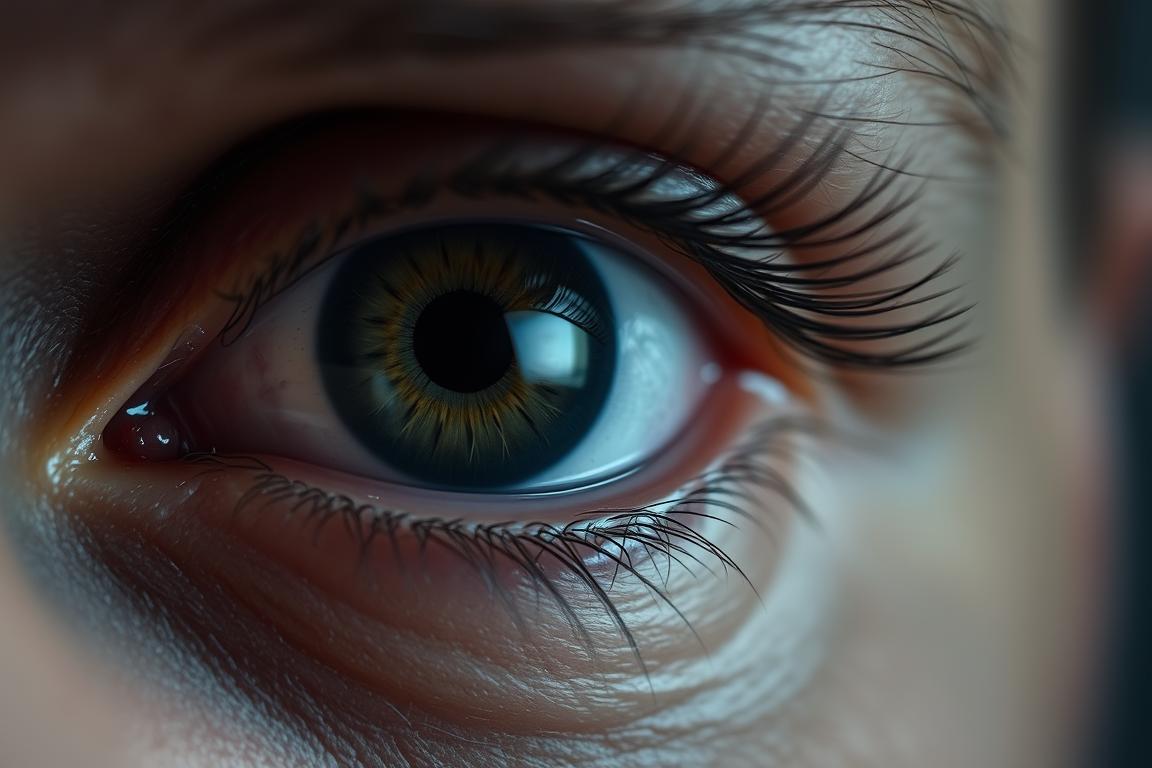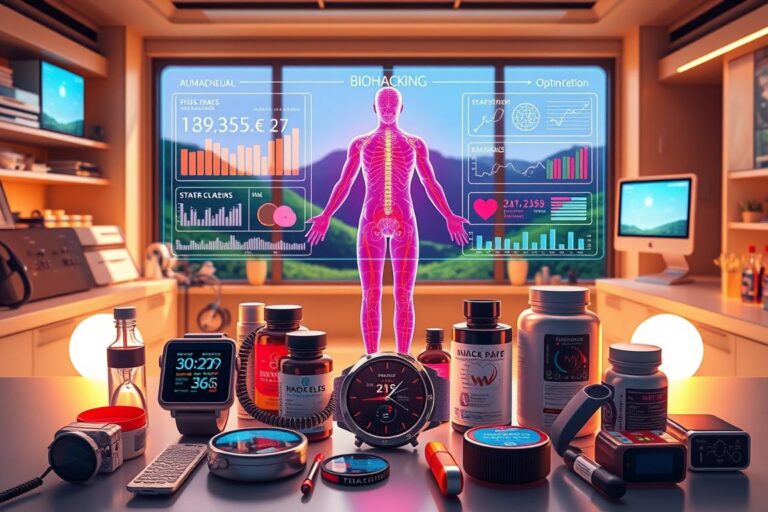What visual disturbances you can expect with dry eyes
In the last 15 years, the number of people suffering from dry eyes has more than tripled. Women in particular are affected by this problem.
The symptoms are varied and can include itchy, burning or reddened eyes. Some people experience a feeling of tiredness in the eyes or blurred vision. It is also possible that the eyes are too dry despite the flow of tears.
An intact tear film is crucial for clear vision. If this is impaired, various visual disorders can occur. In this guide, you can find out more about the possible symptoms and how you can alleviate them.
Understanding the phenomenon of dry eyes
When you talk about dry eyes, you’re talking about a symptom experienced by millions of people worldwide. Dry eyes can be caused by various factors, including environmental conditions and health conditions.
What are dry eyes?
Dry eyes, also known as sicca syndrome, is a condition in which the eyes are not sufficiently supplied with tear fluid. This can lead to
How widespread is the problem?
In the last 15 years, the number of people with dry eyes has more than tripled. Women are affected more often than men, which is attributed to hormonal differences. The risk of suffering from dry eyes increases with age, as natural tear production decreases.
The importance of the tear film for healthy eyes
Your eyes rely on the tear film to see clearly. The tear film plays a crucial role in maintaining your eye health.
Structure and function of the tear film
The tear film consists of several layers and serves to protect and moisten the cornea. It contains various components that are essential for the health of the eyes.
Why an intact tear film is important for clear vision
An intact tear film is essential for your clear vision. It smoothes the corneal surface, ensures optimum light refraction and prevents blurred vision. If the tear film is disturbed, this can lead to impaired vision.
- An intact tear film ensures clear vision thanks to optimum light refraction.
- Dry eyes can cause the corneal surface to become uneven, leading to distortions.
- A stable tear film is particularly important when working at a computer screen.
Causes of dry eyes and associated vision problems
If you suffer from dry eyes, it’s important to understand the underlying causes. Dry eyes can be caused by a variety of factors ranging from environmental conditions to individual health conditions.
Lack of tear fluid
A lack of tear fluid is a direct cause of dry eyes. If your eyes do not produce enough tears, the tear film cannot function properly.
Changed composition of the tear film
A change in the composition of the tear film can also lead to dry eyes. The tear film consists of several layers and a disruption in one of these layers can cause problems.
Increased evaporation of tear fluid
Increased evaporation of tear fluid can be promoted by various environmental factors. Dry heating air and air conditioning can promote the evaporation of tear fluid from your eyes. Working at a computer for long periods can also lead to a reduced blinking frequency, which causes the tear film to evaporate more quickly.
Office eye syndrome: when screen work strains the eyes
Constantly working at a computer can lead to a number of eye complaints known as office eye syndrome. Sitting in front of a screen for hours on end can put a lot of strain on your eyes and lead to various visual disorders.
Reduced blink rate on the computer
When working on the computer, you often blink less frequently, which can lead to dry eyes. This is because you tend to blink less than normal when looking at the screen.
- Prolonged screen time can temporarily impair your vision and lead to blurred vision.
- You may have difficulty focusing, especially when switching between near and far vision.
Effects on visual acuity
These complaints are often reversible, but can lead to permanent vision problems in the case of chronic dry eyes. If vision problems persist, you should consult an ophthalmologist in order to receive suitable treatment.
Regular breaks and the 20-20-20 rule (looking at something 20 feet away for 20 seconds every 20 minutes) can relieve your eyes and alleviate discomfort.
The role of the Meibomian glands in visual disorders
The health of your eyes is closely linked to the function of the meibomian glands. These glands are crucial for the production of the lipid layer of the tear film, which in turn ensures clear vision.
Function of the Meibomian glands
The meibomian glands are located in the eyelids and produce an oily secretion that stabilizes the tear film. Without sufficient function of these glands, the tear film can become unstable, leading to dry eyes.
Blocked lid margin glands as the cause of vision problems
If the excretory ducts of the meibomian glands are blocked, the oily secretion cannot be released properly. This can lead to inflammation at the edge of the eyelid and an unstable tear film, which in turn results in visual disturbances. Regular eyelid margin cleaning and warm compresses can help to prevent and treat blocked glands.
Why women are affected more often than men
Dry eyes affect women more often than men, which is due to hormonal and age-related factors. With increasing age, the body produces less tear fluid, which makes the eyes more susceptible to dryness.
Hormonal influences on the tear film
Hormonal changes, particularly during the menopause, can affect the production and composition of the tear film. This often leads to symptoms of dry eyes in women.
Age-related changes
From the age of 40, tear production gradually begins to decline. The meibomian glands can degenerate with age, which leads to reduced production of the lipid layer and exacerbates the symptoms of dry eyes.
Concomitant diseases that promote dry eyes and visual impairment
Dry eyes can be exacerbated by a variety of conditions. If you suffer from certain health problems, this can increase the risk of dry eyes and associated vision problems.
Diabetes and thyroid problems
Diabetes and thyroid problems can severely affect the eyes. Diabetes can lead to diabetic retinopathy, which impairs vision.
Skin diseases such as psoriasis and neurodermatitis
Skin diseases such as psoriasis and neurodermatitis can also affect the eyes. These conditions can lead to inflammation and irritation, which affect the production and quality of tear fluid.
Rheumatic diseases and Sjögren’s syndrome
Rheumatic diseases, including Sjögren’s syndrome, can attack the lacrimal and salivary glands. Sjögren’s syndrome is an autoimmune disease that leads to extreme dryness of the eyes and mouth.
Some important points about concomitant diseases and dry eyes:
- Sjögren’s syndrome leads to extreme dryness of the eyes.
- Rheumatic diseases increase the risk of dry eyes.
- In severe cases, the tear fluid can dry up almost completely.
Medication as a trigger for visual disturbances in dry eyes
Certain medications can affect the production of the tear film and cause dry eyes. You should know that some medications you may be taking could be a cause of your eye discomfort.
Beta-blockers and psychotropic drugs
Beta-blockers and psychotropic drugs are examples of medications that can reduce tear production. If you are taking such medication, you should be aware of possible side effects on your eyes.
Sleeping pills and anti-allergic drugs
Sleeping pills and anti-allergic drugs, especially older antihistamines, can have a drying effect on your eyes. Modern, selective antihistamines could be an alternative if you suffer from allergies and have problems with dry eyes at the same time.
Environmental influences and their effects on vision
The environment plays a crucial role in the health of your eyes. Various environmental factors can strain your eyes and cause discomfort.
Dry heating air and air conditioning
Dry heating air and air conditioning can dry out your eyes and lead to feelings of dryness. This can occur particularly in offices or air-conditioned rooms.
Air pollution and other environmental impacts
Air pollution, fine dust and exhaust fumes can irritate your eyes and lead to inflammation. Your eyes are particularly exposed in large cities or industrial areas. Sunglasses can protect you from wind and environmental pollutants
Diagnosis of visual disorders with dry eyes
If you suffer from dry eyes, an accurate diagnosis is crucial for effective treatment. The ophthalmologist will carry out various tests to determine the cause of your symptoms.
The Schirmer test for the determination of tear fluid
An important test is the Schirmer test, in which a special paper strip is placed under your lower eyelid to measure the amount of tear fluid. This test provides information about whether your eyes are producing enough tears.
Checking the quality of the tear film
The quality of your tear film is just as important as the quantity. The ophthalmologist can measure the “tear film break-up time” by staining your cornea with a dye and observing how long the tear film remains stable. “A healthy tear film should remain intact for at least 10 seconds before it breaks up,” explains an ophthalmologist. Modern methods such as interferometry can also measure the thickness of the lipid layer of your tear film.
These examinations provide important information about the cause of your symptoms and help you choose the right treatment.
Possible complications of untreated dry eyes
Without treatment, dry eyes can cause a number of complications that can affect your vision and eye health. If you don’t treat dry eyes, chronic inflammation of the surface of the eye can develop.
Corneal damage and its consequences
In severe cases, the conjunctiva and cornea may be severely damaged. This can result in non-healing epithelial defects on the cornea or corneal ulcers.
From inflammation to corneal perforation
Untreated dry eyes can lead to chronic inflammation, which sets a vicious circle in motion. This inflammation can further damage the cornea and lead to deep ulcers that heal poorly. In severe cases, it can even lead to corneal perforation, a condition that constitutes a medical emergency.
- Chronic inflammation can lead to deep ulcers.
- Bacterial infections can colonize a damaged eye surface.
- Regular check-ups at the ophthalmologist are important in order to recognize such developments at an early stage.
It is therefore important to take dry eyes seriously and have them treated to protect your eye health.
Treatment options for better vision with dry eyes
Dry eyes can significantly impair your vision, but there are various treatment options to alleviate your symptoms. Targeted therapy can help to reduce symptoms and promote eye health.
Wetting eye drops and tear substitutes
Wetting eye drops and tear substitutes are an effective way to treat dry eyes. They help to increase moisture on the surface of the eye and alleviate discomfort.
Eye ointments for the night
Eye ointments can be particularly helpful at night as they provide longer-lasting moisturization. However, they should be chosen carefully to ensure the right composition for your eyes.
Eyelid margin care for blocked Meibomian glands
If your dry eyes are caused by blocked meibomian glands, regular eyelid margin care is crucial. Warm compresses and a gentle massage can help to liquefy the hardened secretions and improve drainage.
Consistent eyelid margin care can alleviate your symptoms in the long term and improve the function of the Meibomian glands.
Innovative therapeutic approaches for chronic visual disorders
Modern ophthalmology offers innovative solutions for chronic vision problems. If you suffer from dry eyes, these new approaches can bring a significant improvement to your eyes.
Tear duct closure with silicone platelets
A tear duct closure with silicone plates is a minimally invasive treatment that reduces the outflow of tear fluid and thus increases the moisture in your eyes.
Light therapy (IRPL) for the lid margin glands
Light therapy, also known as Intense Pulsed Light (IPL) therapy, can help with clogged meibomian glands by improving the function of these glands and increasing the quality of the tear film.
Micro-cannulation (PROBING) for blocked glands
Micro-cannulation involves mechanically opening your blocked meibomian glands with special, hair-thin probes. “This treatment is particularly useful if other therapies such as heat treatments have not worked sufficiently,” emphasizes an ophthalmologist. The procedure is carried out under local anesthetic and takes around 15-30 minutes. After the treatment, the glands can function normally again, which is a clear sign of the success of the therapy.
Practical tips for preventing vision problems with dry eyes
You can minimize the risk of vision problems with dry eyes with a few practical tips.
Optimization of the indoor climate
Ensure sufficient humidity of 40-60% in your living and working spaces to reduce the evaporation of the tear film. A humidifier can be particularly helpful during the heating period.
Adaptation of screen work
Avoid direct air currents from air conditioners or heaters on your eyes. Regular ventilation and the placement of indoor plants can also help to improve the air quality and alleviate discomfort in your eyes.





